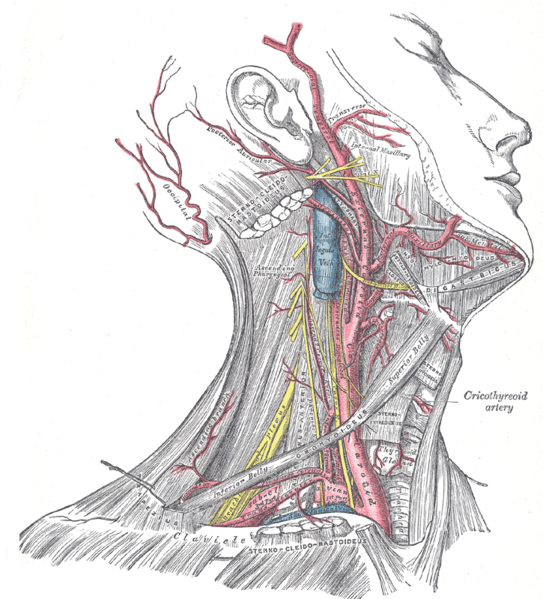Dorsal scapular artery
| Cardiology Network |
 Discuss Dorsal scapular artery further in the WikiDoc Cardiology Network |
| Adult Congenital |
|---|
| Biomarkers |
| Cardiac Rehabilitation |
| Congestive Heart Failure |
| CT Angiography |
| Echocardiography |
| Electrophysiology |
| Cardiology General |
| Genetics |
| Health Economics |
| Hypertension |
| Interventional Cardiology |
| MRI |
| Nuclear Cardiology |
| Peripheral Arterial Disease |
| Prevention |
| Public Policy |
| Pulmonary Embolism |
| Stable Angina |
| Valvular Heart Disease |
| Vascular Medicine |
Editor-In-Chief: C. Michael Gibson, M.S., M.D. [1]
The dorsal scapular artery (or descending scapular artery[1]) is a blood vessel which supplies the latissimus dorsi, levator scapulae, rhomboids, and trapezius.
It most frequently arises from the subclavian artery (the second or third part)[1], but a quarter of the time it arises from the transverse cervical artery.[2] In that case, the artery is also known as the deep branch of the transverse cervical artery.
It passes beneath the levator scapulae to the medial angle of the scapula, and then descends under the rhomboid muscles along the vertebral border of that bone as far as the inferior angle.
See also
Additional images
-
Superficial dissection of the right side of the neck, showing the carotid and subclavian arteries.
References
- ↑ 1.0 1.1 Template:Medcyclopaedia
- ↑ Reiner A, Kasser R (1996). "Relative frequency of a subclavian vs. a transverse cervical origin for the dorsal scapular artery in humans". Anat Rec. 244 (2): 265–8. PMID 8808401.
External links
- Template:NormanAnatomy
- Template:EMedicineDictionary
- Huelke D (1962). "The dorsal scapular artery--a proposed term for the artery to the rhomboid muscles". Anat Rec. 142: 57–61. PMID 14449723.
